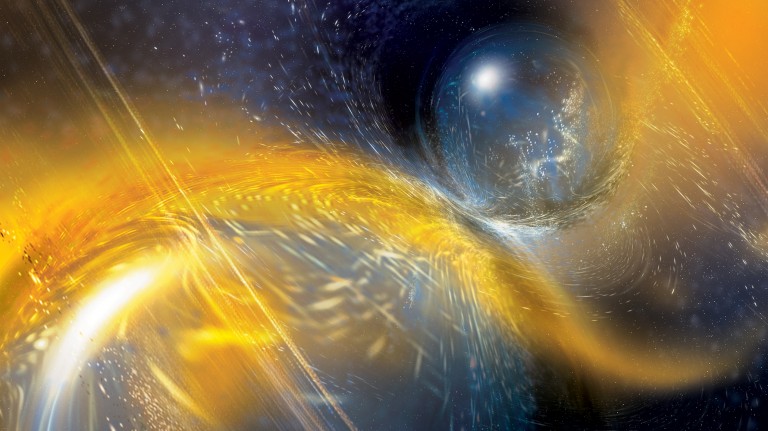Gravitational waves have been spotted following another collision between two neutron stars, it has been announced. This is only the second ever observation of signals from this type of event—and we're still missing some details.
Can you remind me what gravitational waves are? They are the ripples in spacetime created when massive objects move through space, pulling and stretching it around them. They were predicted by Einstein's theory of general relativity and were first detected by the Laser Interferometer Gravitational-Wave Observatory (LIGO) in 2016. Since then, the observatory has detected 50 events—but some are more interesting than others.
What happened this time? These latest gravitational waves were detected last year by the interferometer at LIGO’s Livingston Observatory in Louisiana, scientists told the meeting of the American Astronomical Society in Honolulu, Hawaii, on January 5. LIGO’s other interferometer, located at the Hanover Observatory in Washington, was offline at the time. The European Virgo detector in Italy, which works in collaboration with LIGO, also failed to pick up on the same gravitational waves.
The findings have been submitted to The Astrophysical Journal Letters. If they are accepted, it will be the first time gravitational wave findings have been published based solely on one instrument’s detection.
The crash: So far, we know that the neutron star merger occurred more than 500 million light-years away. Scientists have constrained the crash to a patch that makes up about 20% of the sky.
Until now, the only binary neutron star systems that have been detected have had total masses no bigger than 2.9 times that of our sun. The LIGO data, however, suggests the combined mass of the merger is about 3.4 times the sun's mass. This raises a slight possibility we’re looking at a neutron star colliding with a black hole, but for this to be the case, the black hole would have to be unusually small, and that doesn’t fit the data profile so far. Instead, it appears we’re seeing the heaviest neutron star binary to date.
One after another: The first time scientists detected gravitational waves from a neutron star merger was in 2017. Unlike this latest event, that detection was complimented by a flash of light.

